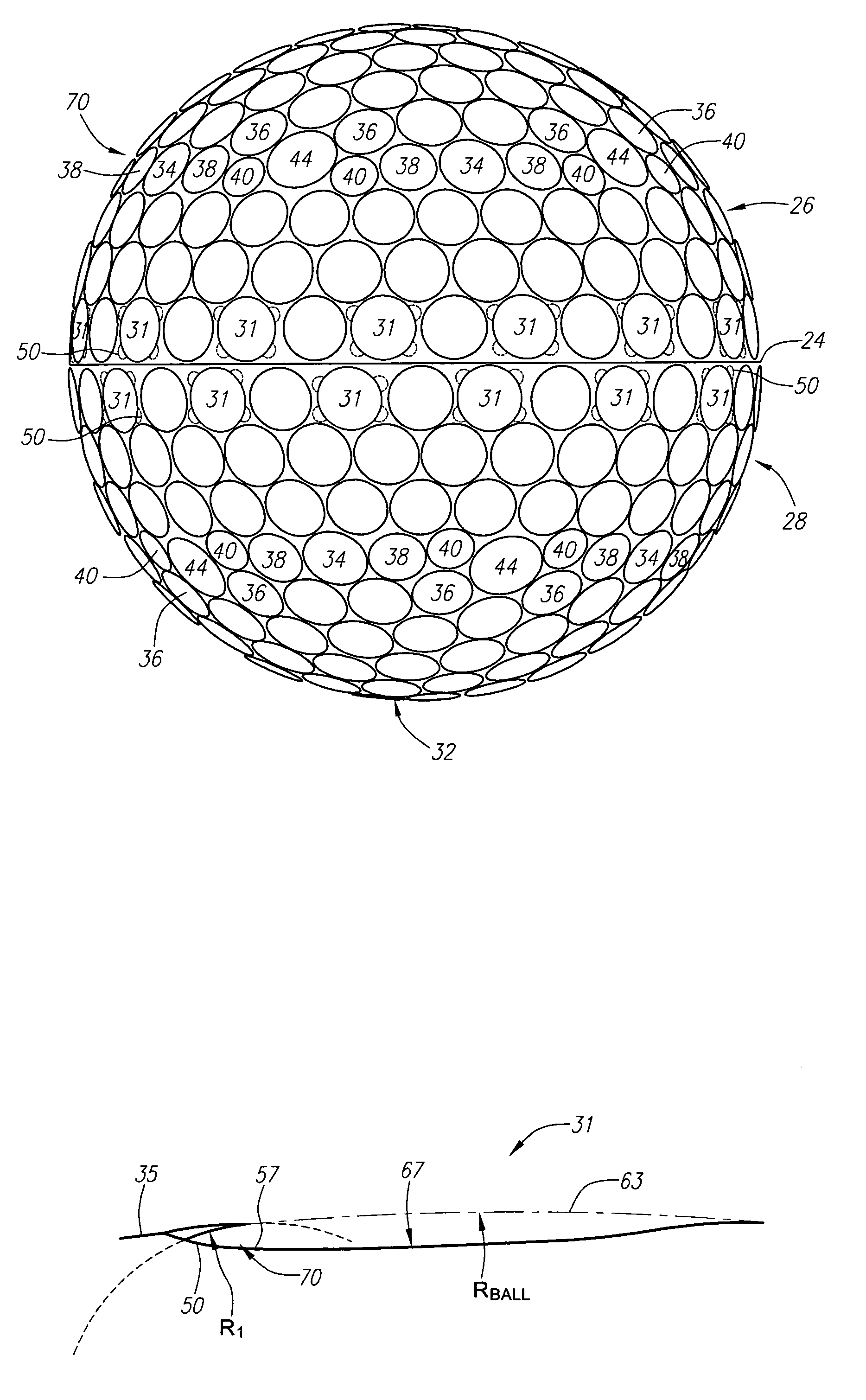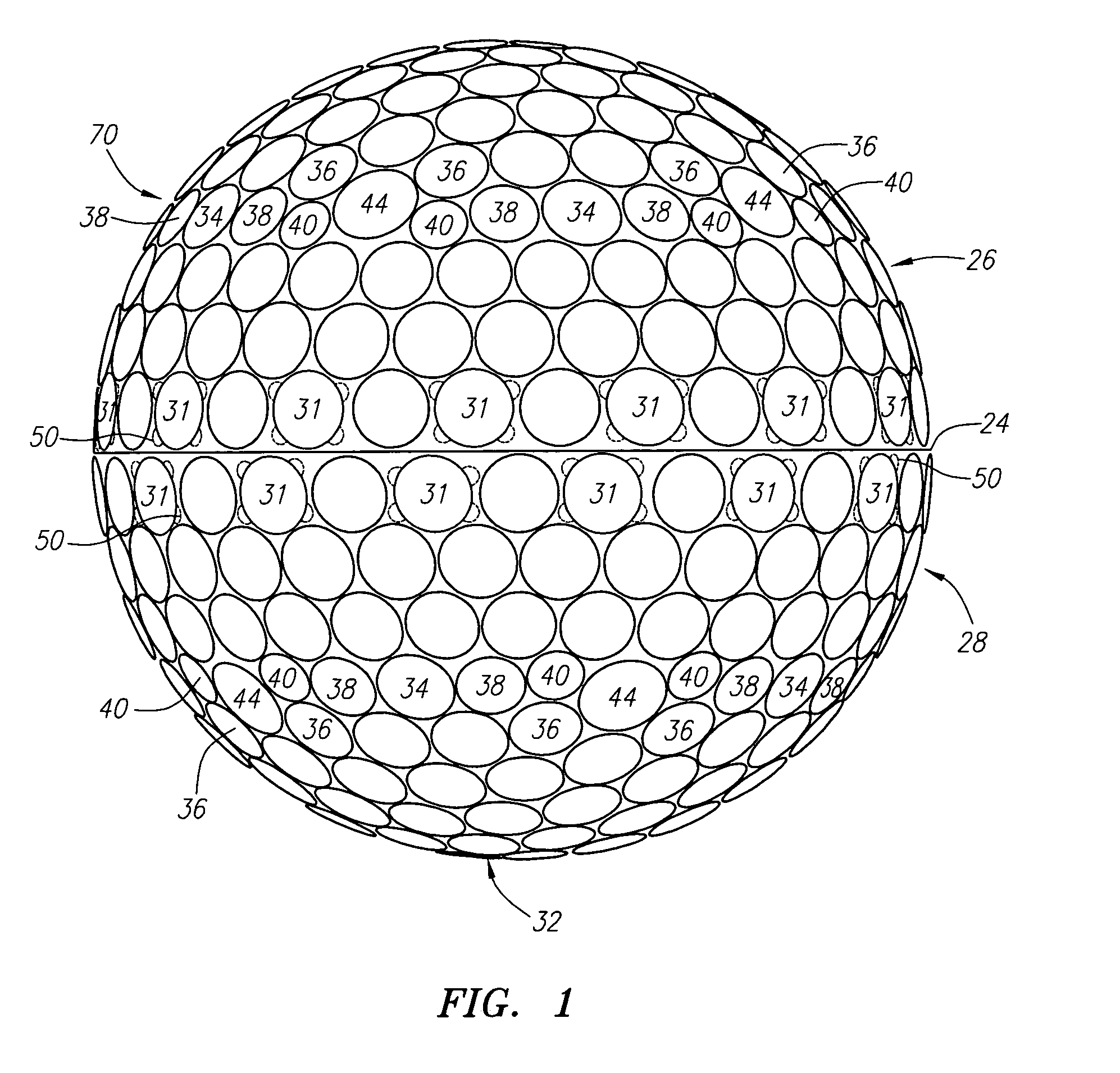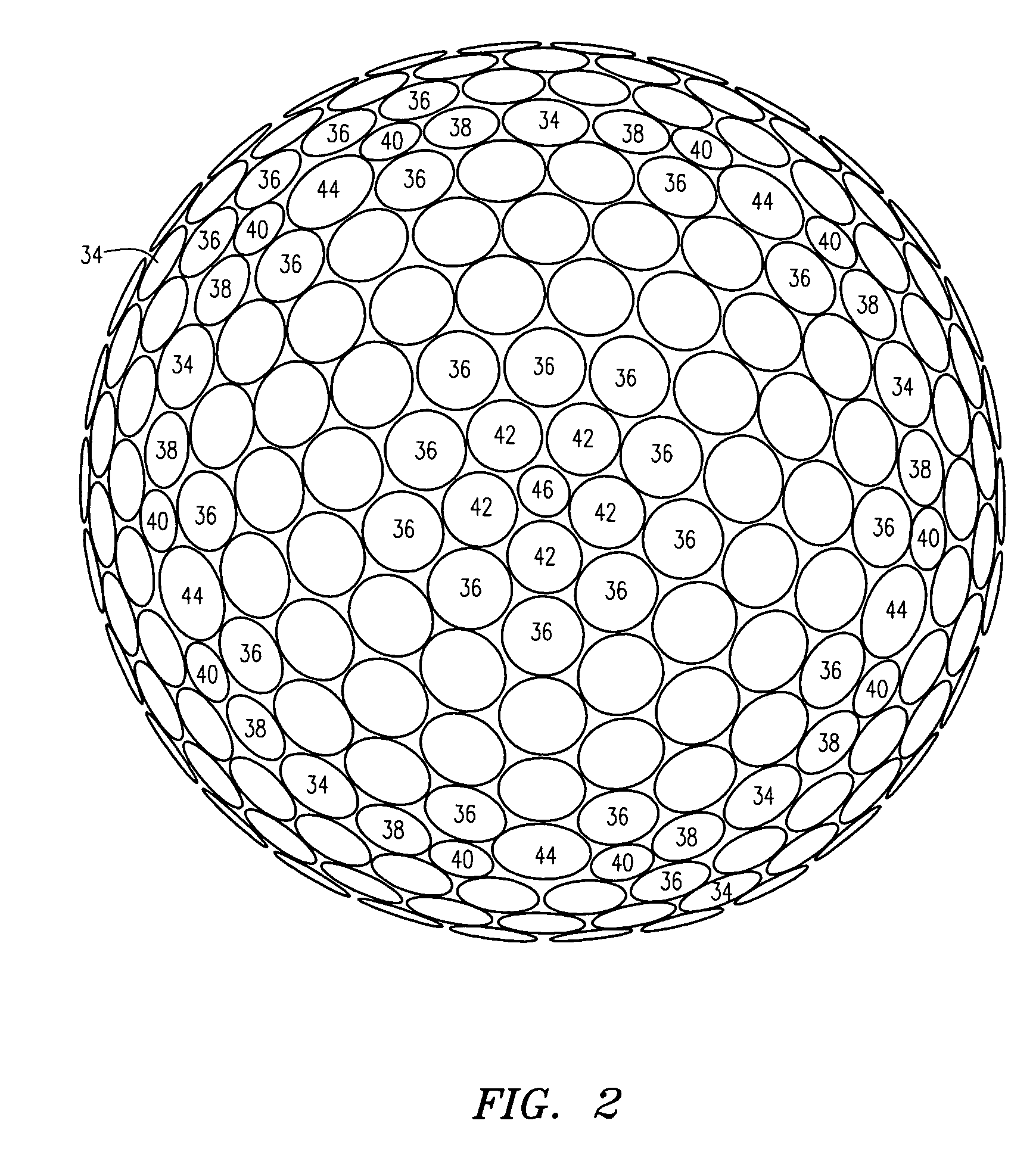Golf ball with undercut dimples
a golf ball and dimple technology, applied in the field of golf balls, can solve the problems of limiting the distance a golf ball can travel in several ways, non-traditional golf balls have been commercially unsuccessful, etc., and achieve the effect of increasing turbulen
- Summary
- Abstract
- Description
- Claims
- Application Information
AI Technical Summary
Benefits of technology
Problems solved by technology
Method used
Image
Examples
Embodiment Construction
[0051]As shown in FIGS. 1–5, a golf ball is generally designated 20. The golf ball 20 may be a two-piece golf ball, a three-piece golf ball, or a greater multi-layer golf ball. The construction of the golf ball is discussed in greater detail below.
[0052]As shown in FIGS. 1–4, the golf ball 20 has a surface 22. The golf ball 20 preferably has an equator 24 dividing the golf ball 20 into a first hemisphere 26 and a second hemisphere 28. A first pole 30 of the golf ball 20 is located ninety degrees along a longitudinal arc from the equator 24 in the first hemisphere 26. A second pole 32 of the golf ball 20 is located ninety degrees along a longitudinal arc from the equator 24 in the second hemisphere 28.
[0053]On the surface 22 of the golf ball 20 are a plurality of undercut dimples 31, a plurality of standard dimples 33 and land area 35. Each of the plurality of undercut dimples 31 has at least one undercut area portion 50. The undercut area portion 50 extends from under the land area ...
PUM
 Login to View More
Login to View More Abstract
Description
Claims
Application Information
 Login to View More
Login to View More - R&D
- Intellectual Property
- Life Sciences
- Materials
- Tech Scout
- Unparalleled Data Quality
- Higher Quality Content
- 60% Fewer Hallucinations
Browse by: Latest US Patents, China's latest patents, Technical Efficacy Thesaurus, Application Domain, Technology Topic, Popular Technical Reports.
© 2025 PatSnap. All rights reserved.Legal|Privacy policy|Modern Slavery Act Transparency Statement|Sitemap|About US| Contact US: help@patsnap.com



